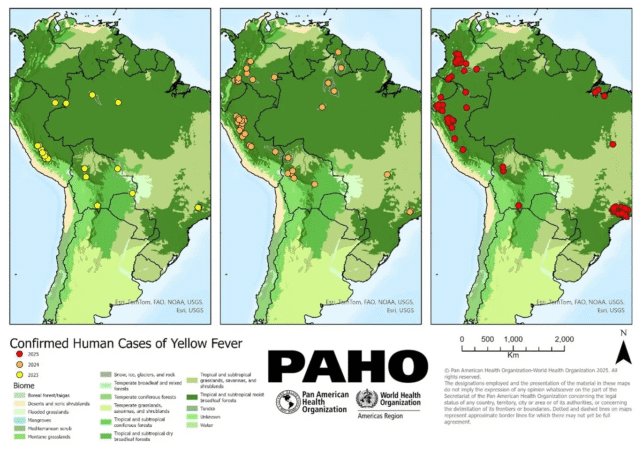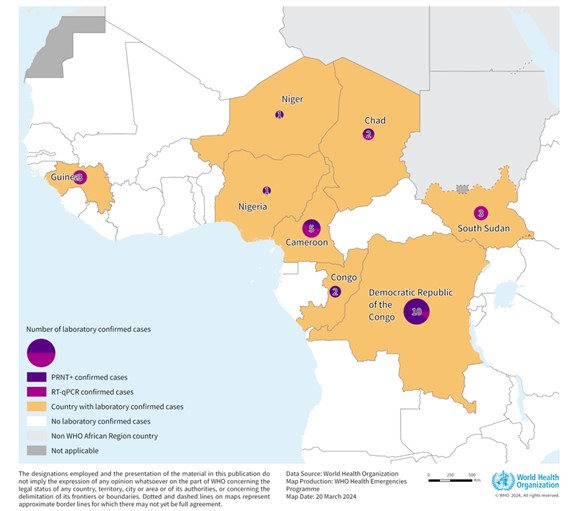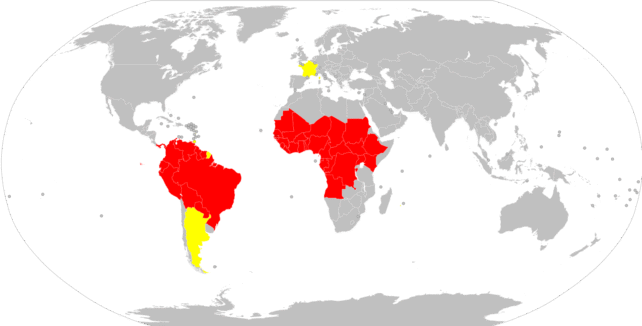Yellow fever is a dangerous mosquito-borne virus that, for hundreds of years, has caused sporadic, deadly outbreaks in the tropics of South America, Central America, and Africa.
According to a new perspective from infectious disease specialists and the Yellow Fever Advisory Group, the chances of the virus going global have only increased with each passing decade.
A recent resurgence in yellow fever cases in Africa and the Americas has experts seriously worried about future spread to the Asia Pacific region.
"The world is clearly at high risk for epidemic/pandemic yellow fever," the international team concludes, led by infectious disease specialist Duane Gubler from the National University of Singapore.
"A yellow fever pandemic in today's world would cause a devastating public health crisis that, because of the much higher lethality, would make the COVID-19 pandemic pale by comparison."

Unfortunately, the yellow fever virus has a long history of travel.
Prior to the 1600s, yellow fever and its mosquito carriers were endemic to Africa. Later, they spread to the Americas via the transatlantic slave trade, sometimes killing up to 10 percent of some local populations in the New World.
When the virus began taking over Europe, roughly a century later, it became known as the "American plague".
The development of a highly effective yellow fever vaccine in the 1930s changed everything. Yellow fever mosquitoes were also almost completely eradicated in the Western Hemisphere, and the two factors stopped urban spread in the Americas.
In the decades since, yellow fever mosquitoes have re-infested much of the neotropics, and while Africa continues to experience intermittent epidemics in urban centers, the Americas have been free of a yellow fever epidemic for 80-plus years, only experiencing small and infrequent outbreaks.
Scientists are concerned that reprieve won't last for much longer.
In recent years, there's been a worrisome resurgence in yellow fever outbreaks in Africa and the Americas, possibly because of poor vaccine coverage, expansion of human populations, lack of travel restrictions, and/or lack of mosquito control.

According to Gubler and colleagues, tropical cities that have not historically experienced yellow fever now face "the greatest risk in over 70 years" of an epidemic.
"Of primary concern in this regard is the Asia-Pacific region," the team adds, "where over two billion susceptible people live in areas infested by yellow fever mosquitoes."
These mosquito populations aren't carrying the yellow fever virus just yet, but they are species that are capable of doing so.
If a human traveller with yellow fever returns to the Asia-Pacific region after travel in Africa or South America, it is possible that local mosquitoes bite them and contract the virus. This could allow for spread among new insect populations in new regions, threatening local humans with a spillover event.

"Today's megacities all have modern airports through which billions of people pass every year, many of them visiting remote locations and carrying exotic pathogens back to crowded tropical cities, where the probability of secondary transmission is increased," warns the recent perspective.
"If the virus is introduced to a permissive nonendemic country, especially one located in Asia, the disease might be first misdiagnosed as dengue, likely resulting in spread before being recognized as the yellow fever virus."
So what are we to do?
Researchers say that first, we need to expand the global supply of yellow fever vaccines and improve coverage. Otherwise, outbreaks will continue and we won't be ready if the virus spreads to new regions.
Gubler and colleagues also argue for increased surveillance of yellow fever cases in poor countries where the disease is endemic, and in non-endemic countries where the virus could possibly spread in the future.
"Immunization services, disease surveillance, and the outbreak response in nearly 50 countries are already being disrupted – with setbacks at a similar level to what we saw during COVID-19," warned UNICEF Executive Director Catherine Russell in April 2025.
"We cannot afford to lose ground in the fight against preventable diseases."
The perspective was published in NPJ Viruses.